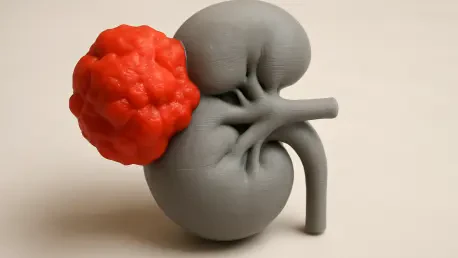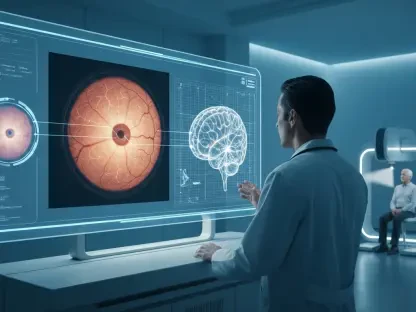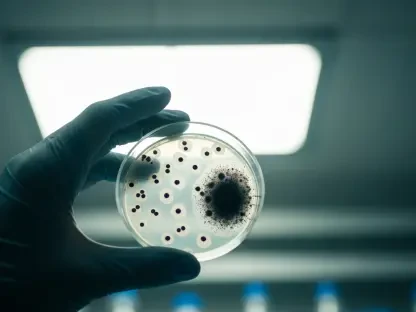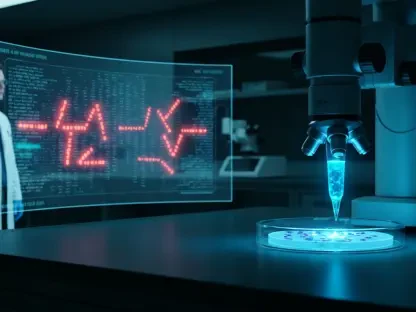What if a doctor could test life-saving cancer treatments on an exact copy of a patient’s tumor before ever prescribing a drug? This revolutionary concept is no longer confined to science fiction but is becoming a tangible reality through the advent of 3D-printed kidney tumor organoids. These lab-grown replicas are poised to transform the battle against renal cancer, a disease that affects over 400,000 people globally each year. With such staggering numbers and the persistent challenge of drug resistance, this cutting-edge technology offers a beacon of hope for personalized medicine, promising treatments tailored to the unique biology of each patient.
The significance of this breakthrough cannot be overstated. Renal cell carcinoma (RCC), the most prevalent form of kidney cancer, often defies conventional therapies due to its unpredictable nature and ability to evolve over time. Standard lab models have long fallen short in mimicking these complexities, leaving clinicians with limited tools to predict treatment outcomes. Now, with 3D bioprinting, researchers have a powerful new method to bridge this gap, potentially improving survival rates and redefining how kidney cancer is approached in medical practice.
A Dire Need for New Solutions in Kidney Cancer
Renal cancer remains a formidable foe in the medical field, with incidence rates climbing steadily across the globe. According to recent data, nearly 80,000 new cases are diagnosed annually in the United States alone, and many patients face dismal prognoses due to late detection and ineffective therapies. Chemotherapy and even targeted drugs frequently fail as tumors develop resistance, leaving both patients and doctors grappling with uncertainty.
This growing crisis highlights a critical void in current research and treatment strategies. Traditional models, often based on generic cell lines, rarely capture the intricate behavior of a specific patient’s tumor, resulting in data that doesn’t translate well to real-world scenarios. The urgent need for innovation has never been clearer, as the medical community seeks tools that can offer more reliable insights into how to combat this deadly disease.
Pioneering Technology from Lab to Life
At the forefront of this fight is a groundbreaking technique developed by scientists at Tsinghua University, where 3D bioprinting is used to create detailed kidney tumor organoids from patient-derived cells. These miniature models replicate not just the tumor’s structure but also its surrounding environment, including blood vessel-like formations, providing an unprecedented level of accuracy. Unlike older methods, this approach preserves the distinct genetic and biological traits of each patient’s cancer.
The benefits of this technology are manifold. It enables rapid testing of various drugs on a patient-specific model, slashing the time needed to identify effective treatments. Additionally, the automated nature of bioprinting reduces labor-intensive processes, allowing for scalable production of organoids to support larger studies. This innovation stands as a pivotal step toward making precision medicine a reality for kidney cancer patients.
Voices of Hope from the Experts
Dr. Yuan Pang, a key researcher behind this development, shared profound optimism about its impact: “This method has the potential to transform how quickly and accurately treatments are matched to patients, which could be life-changing for many.” Early studies have shown that these 3D-printed organoids can predict tumor responses to medications with remarkable precision, offering a glimpse into more successful clinical outcomes.
Beyond immediate applications, experts believe this technology opens doors to deeper discoveries. By studying how tumors grow and resist therapies in a controlled, realistic setting, scientists can uncover new pathways for drug development. The enthusiasm in the field is palpable, as this aligns with the broader movement toward individualized care in oncology, setting a new benchmark for research.
Transforming Patient Care with Precision
The practical implications of 3D-printed kidney tumor organoids are vast, offering a roadmap for integrating this technology into everyday medical practice. By starting with a biopsy to collect a patient’s tumor cells, clinicians can create a bespoke organoid that mirrors the cancer’s unique profile. This model then serves as a testing ground for multiple therapies, identifying the most promising option before any treatment is administered.
Moreover, these organoids allow for continuous monitoring of a tumor’s evolution. As resistance to certain drugs emerges, adjustments can be made swiftly, ensuring that treatment remains effective over time. This dynamic approach minimizes the guesswork that often accompanies cancer care, providing a more calculated strategy tailored to individual needs.
Such advancements also fuel broader research efforts. With these accurate models, scientists can delve into the genetic mutations driving kidney cancer, potentially leading to novel interventions. This systematic integration of technology into both clinical and research settings marks a significant leap toward a future where personalized treatment is the norm.
Charting the Path Ahead
Looking back, the journey to this point reflects a relentless pursuit of better solutions for kidney cancer patients. The development of 3D-printed organoids stands as a testament to human ingenuity, addressing long-standing gaps in understanding and treating this complex disease. Each step, from concept to lab results, underscores a commitment to improving lives through science.
Moving forward, the focus must shift to scaling this technology for widespread use, ensuring that hospitals and research centers can adopt it efficiently. Investment in training and infrastructure will be crucial to bring these innovations from specialized labs to broader clinical settings. Additionally, ongoing studies should explore how this approach can extend to other cancers, amplifying its impact across oncology. The road ahead holds immense promise, and sustained collaboration between researchers, clinicians, and policymakers will be essential to turn this potential into tangible, life-saving outcomes for countless individuals.









